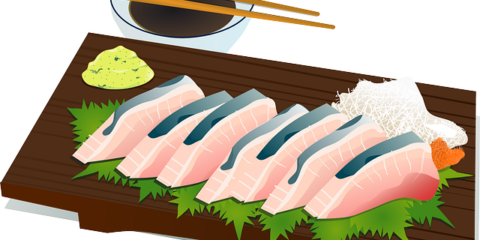When eating in a British restaurant, it is customary to say (thank you) in the following situations: when you get the menu, when you order, when you serve, when you get the bill, and when you pay.
British people attach great importance to the cultivation of children: “table manners education”. In British restaurants, you can’t hear shouting “waiter” or “Miss” or talking loudly. When eating, talk quietly and use a smile instead of laughing. Don’t make any noise when drinking soup. Shut up and chew food. Don’t talk when you have food in your mouth!
Several points for attention of British table manners
1. appointment:
Make an appointment in advance when you go to a restaurant to have dinner, explain the number and time of meals, and indicate whether you want a smoking area or a seat with a good view. If it is a birthday or other special day, you can tell the purpose and budget of the banquet. It is a basic courtesy to arrive at the scheduled time. In case of an emergency, you should notify us in advance to cancel the positioning and must apologize.
Dress appropriately, men should dress neatly; Women should wear evening dresses or suits and shoes with heels. Women should wear heavy makeup because the light in the restaurant is dark. If formal clothes are specified, men must wear a tie. When entering the restaurant, men should open the door first and invite women to enter. Women should walk in front. Ladies should be invited to taste and decide whether to take a seat or order wine.
The general business hours are from 11:30 p.m. to the afternoon and dinner starts after 6:30 p.m. if guests arrive early, they can drink in the bar first and then enter the main restaurant.
2. sit down
After sitting down, you can take your order in no hurry. You can directly ask the waiter. If they are not very clear, they will ask the restaurant manager or chef.
It is impolite to arrive at a western restaurant at 11:00 p.m. or 5:30 p.m., leave after a hurried meal, talk about business at the table, not pay attention to clothes, eat the main course too slowly and affect the next course, or just order the appetizer without the main course and dessert.
Although you can choose dessert, cheese, coffee, tea, and so on for appetizers, different countries have different tipping habits. But we must praise and thank you more.
Don’t fiddle with the tableware on the table. Fold the napkin in half and gently place it on your lap. The napkin cloth can be used to wipe the mouth or hands. It should be folded into a triangle shape with diagonal lines or a square shape with parallel lines. All stains should be wiped inside, and the appearance always looks clean. When leaving the seat, even if it is temporary, you should take off the tablecloth and fold it into a square or triangle at will and put it on the side of the plate or the foot of the table, preferably on your own seat.
Sit up straight, don’t put your elbows on the table, and don’t cross your legs. The distance between people and the table is better to facilitate the use of tableware.
3. methods and precautions for using knife, fork, and spoon
When eating with a knife and fork, take the knife and fork from the outside to the inside. (lefties can take them in reverse, but they should put them back in place after eating.) hold the fork in the left hand and the knife in the right hand; When using the knife, the blade must not be outward. When putting down the knife and fork during the meal, they knife and fork should be placed in an “eight” shape and placed on the edge of the plate respectively. The blade is facing toward itself, which means that you will continue to eat. After each dish, put the knife and fork together on the plate, indicating that the waiter can remove the tableware. If it is a conversation, you can hold a knife and fork without putting them down. When you don’t use a knife, you can hold a fork with your right hand. However, if you need to make gestures, you should put down the knife and fork. Never wave and shake the knife and fork in the air with your hand. Never hold a knife or fork in one hand and wipe your mouth with a napkin in the other hand. Never hold a wine cup in one hand and a fork in the other hand. Please remember, at any time, do not put one end of the knife and fork on the plate and the other end on the table.
The knives, forks and spoons used in Western food have their own uses and cannot be replaced or mixed.
The knife is used to cut food. Do not use the knife to pick up food and send it to your mouth. Remember: hold the knife in your right hand. If there are three kinds of knives with different specifications at the same time, the usage is: the one with small serrations is used to cut meat food; the Medium size is used to cut large pieces of vegetables into small pieces; The small knife with a round tip and some upturned top is used to cut small bread, and then use it to pick some jam and cream on the bread.
The fork should be held with the left hand, and the action should be light when forking the food into the mouth. Pick up an appropriate amount of food and put it into your mouth at one time. When the fork picks up food and puts it into the mouth, the teeth only touch the food. Do not bite the fork, and do not let the knife and fork make a sound on the teeth or on the plate.
Spoons. On formal occasions, there are many kinds of spoons. The small ones are used for coffee and dessert, that is, dessert; Flat for buttering and serving cakes; The larger one is used to drink soup or to pack small pieces of food; The largest one is for sharing soup, which is common in buffets.
4. precautions during meals
Bread is usually broken into small pieces and sent to the mouth. When spreading butter and jam, break the bread into small pieces before spreading. When eating, you should shut up and chew. Do not lick your lips or smack your lips to make a sound. You can’t make a sound when drinking soup. If the soup is overheated, you can eat it after it cools a little. Don’t blow it with your mouth. Ladle the soup from the inside out with a spoon. When the soup in the soup plate is almost finished, tilt the outside of the soup plate slightly with your left hand and ladle it out with a spoon. When you finish the soup, leave the spoon on the soup plate (bowl) and point the spoon to yourself. When eating fish, meat, and other dishes with thorns or bones, do not spit them out directly. You can cover your mouth with a napkin and gently spit them on the fork and put them into the plate. To eat noodles, roll up the noodles with a fork and then put them into the mouth.
When drinking coffee, if you need to add milk or sugar, use a small spoon to stir well, and then put the small spoon on the coffee saucer. Drink with a cup handle in your right hand and a dish in your left hand. Don’t drink with spoons. Don’t bite the whole fruit when you eat it. You should first cut it into four pieces with a fruit knife, then remove the skin and core with a knife, and then eat it with a fork.
5. How to match alcohol with food
Sour taste: you can choose acidic wine and acidic food to eat together. Acidic liquor is shared with salty food and tastes good.
Sweetness: when eating dessert, dessert with too much sugar will cover the wine taste and lose the original taste. You should choose a slightly sweeter wine. In this way, the wine can keep its original taste.
Bitterness: bitter wine and bitter food will reduce the bitterness. So if you want to lighten or remove the bitterness, you can eat bitter wine with bitter food.
Saltiness: there are many kinds of wine that can reduce the saltiness of salty food. Many countries and regions in the world use lemon juice or wine when eating seafood such as fish. The main reason is that acid can reduce the salinity of fish. When eating, it tastes more delicious.
6. Matters to note during the toast
When clinking glasses, hosts and guests of honor touch first. People can raise their glasses at the same time, not necessarily clinking glasses. Be careful not to cross your glasses during the toast. When making speeches and toasts, stop eating, stop talking and listen carefully. After the host and the guest of honor have finished their speeches and clinked their glasses with the members of the VIP table, they often go to other tables to toast. In this case, they should stand up and raise their glasses. When clinking glasses, you should look at each other and greet them.
Never drink too much. Drinking too much is impolite, so we must limit it to less than one-third of our drinking capacity.
7. How to solve and deal with unexpected situations
In case of any abnormal situation during the banquet, keep calm and don’t worry. If the tableware makes a noise, you can gently say “sorry” to the neighbors (or the hosts). If the tableware falls, the waiter can give it away. Apologize for spilling the wine on your neighbor and help dry it; If the other party is a woman, just hand over a clean napkin or handkerchief and let her dry it by herself.






